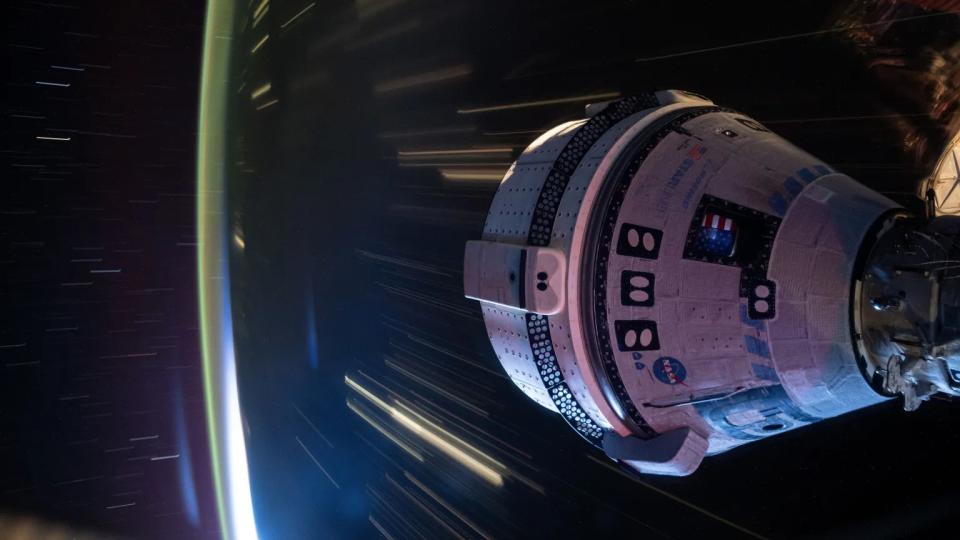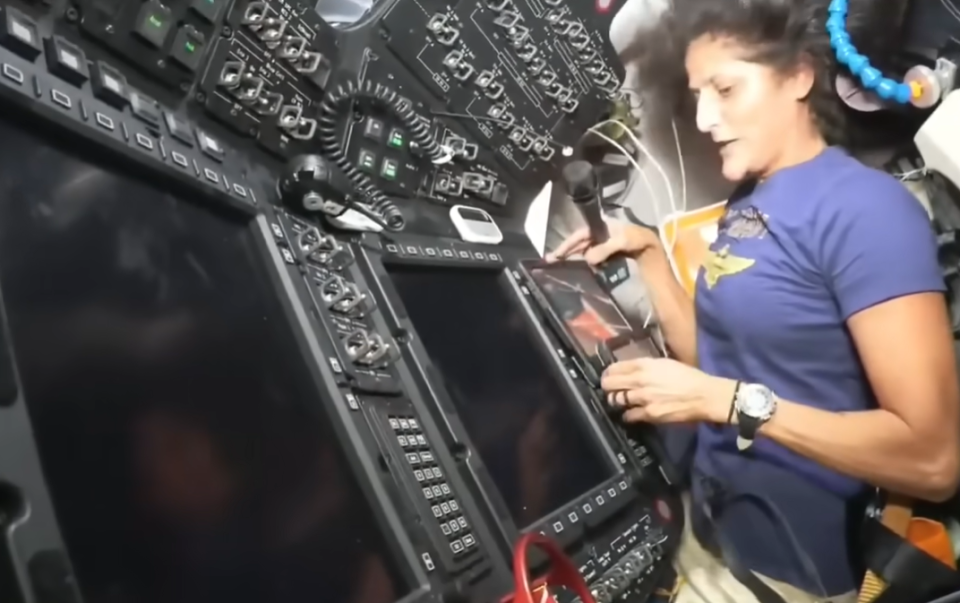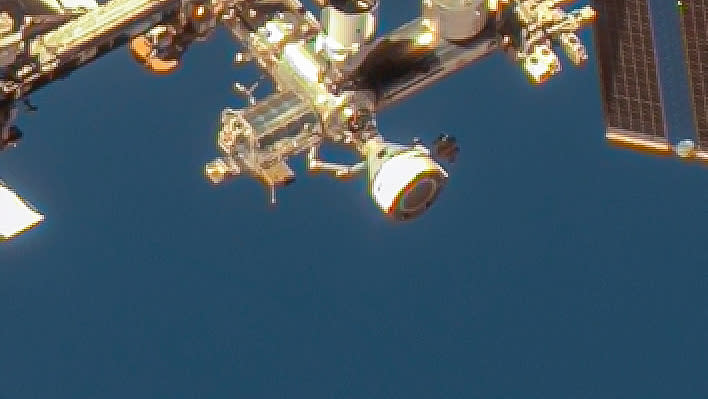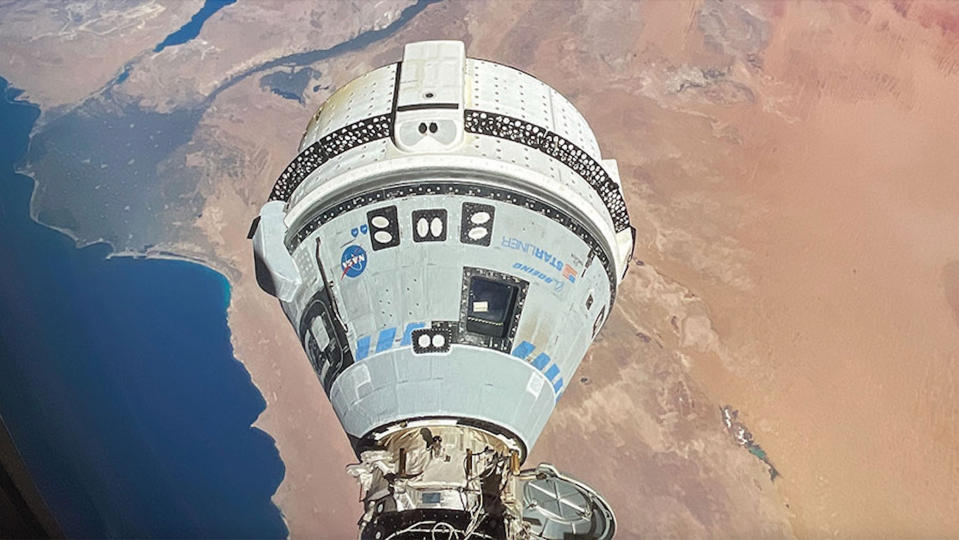When you buy through links in our articles, Future and its syndication partners may earn a commission.

Boeing’s Starliner will soon conduct a “hot fire” test in space as NASA and the company continue to investigate the cause of thruster failures and a helium leak in space.
Starliner will test fly its 28-thruster reaction control system (RCS) on Saturday (July 27) or Sunday (July 28) from the International Space Station (ISS), NASA and Boeing announced today (July 25) at a news conference. Only 27 of the RCS thrusters will be used, as one was previously deemed unusable for the flight home.
The commands will be conducted from the ground, though NASA astronauts Butch Wilmore and Suni Williams — the astronauts flying on Starliner’s current mission, known as Crew Flight Test (CFT) — will also likely join, given their interest as former U.S. Navy test pilots.
“We’re going to give all of those thrusters a series of pulses to make sure the entire system is operating as we expected and as we last checked before we undock,” Steve Stich, manager of NASA’s Commercial Crew Program, told reporters during a livestreamed news conference.
“We’ll also get a chance to look at the helium system,” he added. “It’s been six weeks since we last checked the helium system, which was June 15th. So we’ll be pressurizing manifold by manifold, and then firing up the thrusters, and then we’ll get a chance to look at the helium leak rates and verify that the system is stable.”
CFT was initially scheduled to last about 10 days after its June 5 launch, but encountered problems with its booster and helium leaks before it could safely dock with the ISS the next day. The mission has been extended indefinitely while engineers fix the problem.
Related: When will Starliner come home? Boeing and NASA still don’t know
Following ground testing at the White Sands Test Facility in New Mexico in early July, engineers now have a better understanding of what happened during the difficult docking period.
For example, an Aerojet Rocketdyne test MR-104J test thruster similar to the one aboard Starliner, which had been in storage for three years prior to the recent grounding, experienced “severe degradation” in its valve system from nitrogen dioxide vapor; propellant flow was restricted by bulging in a seal, Stich said. Engineers also found Teflon stuck in a downstream filter, suggesting erosion in a seal is occurring from “bubbling” at high temperatures.
The behavior of Starliner’s RCS thrusters in orbit appears to match what’s seen on the ground, Stich noted. The type of thruster, he told Space.com during the press conference, “has heritage” from other space programs at Aerojet (an L3Harris company), but was adapted for Starliner’s service module, which houses the RCS thrusters and propulsion system.


“I think we’re starting to understand much better now about this mission — and we wouldn’t have understood this if we had just stayed on the ground and done more analysis and testing — that we understand the integrated effects between how the guidance, navigation and control system works. [and] “The flight control system commands the thrusters to fire during rendezvous,” Stich said.
A surrounding “doghouse” around each RCS thrust group insulates and protects the thrusters from the cold temperatures of space. (There are four doghouses total on the service module.) What CFT has shown is that a number of RCS thrust pulses in a short period of time, in addition to the orbital maneuvering and attitude control system (OMAC) firings, causes the RCS thruster temperatures to rise more than expected.
Related: ‘I’m sure we’ll find out’: NASA astronauts fly to launch site for first crewed Boeing Starliner mission to ISS (Photos)
Stich said the problem may not be solved by a design change, but by changing the way the thrusters are used in flight (such as firing them less often). Discussions are underway at the highest levels of the agencies, he noted; NASA is planning an agency-level review of CFT as early as next week, and the agency’s Aerospace Safety Advisory Panel will be invited to it as well, he said.
Aerojet Rocketdyne worked closely with Boeing during the mission, Boeing Commercial Crew Program Manager Mark Nappi added. Discussions are ongoing about how to address the issue, including installing new seals. For the thrusters, Boeing may ask future crews to fly a different profile to the ISS or “put different thermal protection in the doghouse,” Nappi said today.


Test missions like CFT often face unexpected events, and Starliner has always been capable of leaving the ISS in the event of an emergency. CFT astronauts Wilmore and Williams participated in orbital troubleshooting in June before being reassigned to ISS maintenance duties for what is now (and still is) a 50-day mission.
NASA also extended the initial CFT in-space limit to more than 45 days, saying battery performance (which initially set the limit) performed better than expected in orbit. In today’s briefing, Stich said the mission is now officially rated for 90 days, or until Sept. 3 (though landing timing has not yet been set.)
Understanding the root causes of the thruster and helium problems in the RCS, which controls maneuvers in orbit, is important for future Starliner missions. After CFT, the Starliner-1 mission would need to spend six months on the ISS with at least three astronauts, no earlier than 2025.
Starliner is one of two privately owned U.S. spacecraft that send astronauts to the ISS, along with SpaceX’s Crew Dragon. Crew Dragon, which has been carrying crews since May 2020, is based on SpaceX’s cargo Dragon, which has flown into space repeatedly since 2012. Starliner, as a new spacecraft, faced development challenges after its first spaceflight.


The first ISS launch of Starliner without astronauts, in December 2019, never reached its destination due to computer problems that kept the spacecraft in the wrong orbit. The next uncrewed mission did reach its destination, but that one took place in May 2022, after the COVID-19 pandemic took hold and dozens of fixes were implemented. (The 2022 docking also had problems with the booster, which NASA thought it had fixed before CFT.)
CFT was postponed to 2023 after flammable tape was found in Starliner’s wiring, and engineers discovered its parachutes were carrying less payload than expected. For months, the mission appeared to be on track for a May 6 launch. But hours before liftoff, astronauts were evacuated after a vibrating valve was discovered on the United Launch Alliance (ULA) Atlas V rocket.
Related: ‘It’s so complicated’: Boeing Starliner teams diagnose helium leak ahead of astronaut launch
Starliner was grounded for a month while ULA replaced the valve, and after a small helium leak was discovered in an RCS thruster. Extensive ground testing and modeling found no expected problems for CFT, but analysis revealed a vulnerability: under certain conditions, if enough RCS thrusters in adjacent doghouses failed, one reentry option could be affected. After engineering and simulator work, NASA and Boeing certified a new reentry mode that required fewer RCS thrusters to be fired at a time.
CFT launched on June 5, but only after undergoing another late-countdown scrub due to a ground equipment failure affecting the Atlas V. Docking issues aside, NASA and Boeing have stressed that Starliner’s stay in space has been uneventful and the spacecraft is performing well. And as former U.S. Navy test pilots, both Williams and Wilmore are accustomed to long deployment and development programs.
RELATED STORIES:
— Starliner: Boeing’s Next-Generation Spaceship for Astronauts
— Boeing Starliner 1st Astronaut Flight: Live Updates
— ISS astronauts seek shelter in Boeing Starliner and other reentry spacecraft after June 26 satellite failure
Starliner and SpaceX each received billions of dollars to carry astronauts under a contract with NASA’s Commercial Crew Program in 2014. After a test flight of astronauts launched in May 2020, SpaceX has now sent 11 crews to the ISS: eight on behalf of NASA and three shorter-duration crews for Axiom Space.
SpaceX missions are currently grounded due to a problem with the second stage of its Falcon 9 rocket that was discovered earlier this month during a Starlink satellite launch. The Falcon 9 completed a static fire last night, but the Federal Aviation Administration (FAA) has not yet responded to SpaceX’s request to re-fly missions under a public safety determination; SpaceX maintains that there was no risk to the public during the launch, as only the rocket’s second stage (in space) was affected.
SpaceX is currently expected to launch two ISS missions in August, pending FAA approval and independent review by NASA: Northrop Grumman’s Cygnus cargo ship and the four Crew 9 astronauts aboard Crew Dragon.